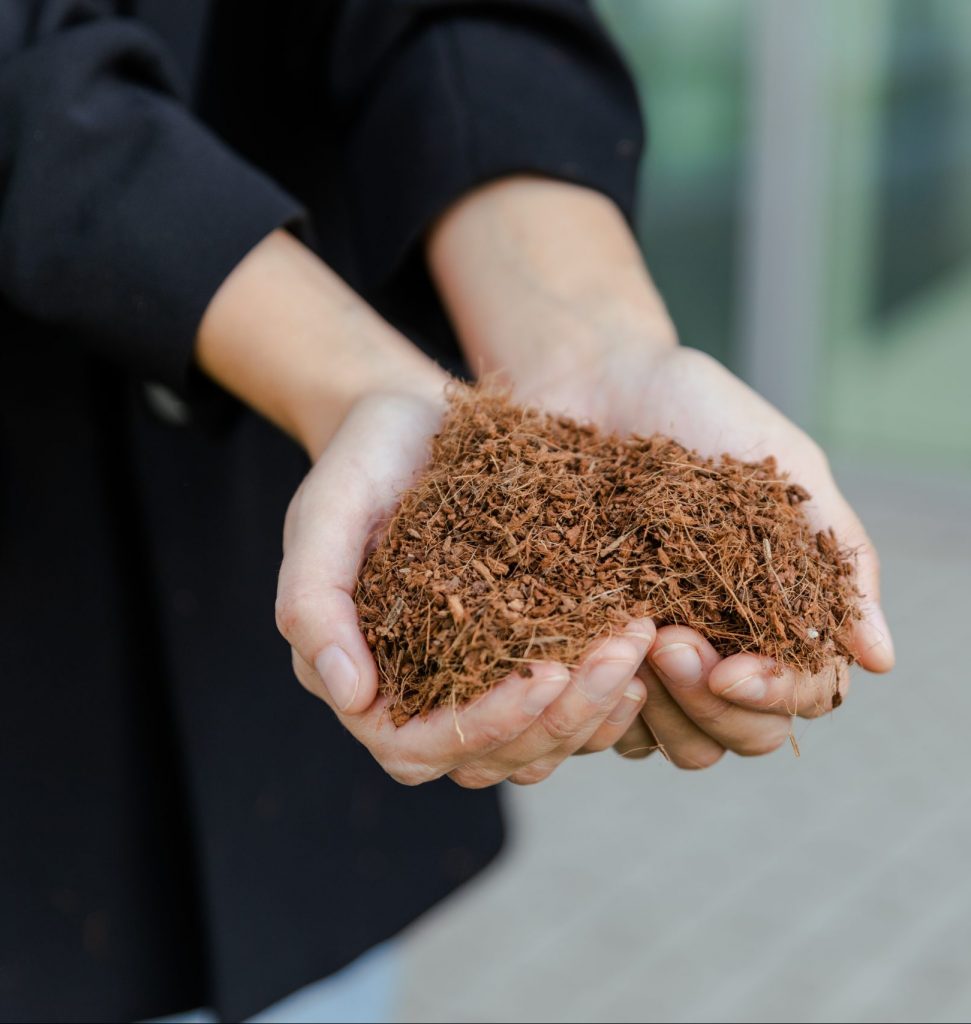CHOOSE WITH UNDERSTANDING
About coconut substrate
Coconut substrate is used worldwide as a medium for growing various crops hydroponically and soillessly. It is used extensively in nurseries, greenhouses, during reproduction and planting.

Best peat moss alternative
Can you imagine a growing environment that provides excellent aeration, drainage and water retention, while having strong antifungal properties and being environmentally friendly?
These properties are the reality of growing in coconut substrate, and its benefits do not stop there:

- High cation exchange ensures that nutrients are easily absorbed by the plant roots
- Top layer of the substrate dries fast, significantly lowering the chance of fungal infections
- While top layer is dry, the rest of the substrate remains wet thanks to water holding capacity of approximately 40%
- Coir retains some good microorganisms, such as Trichoderma fungus, and protects the plants against harmful pests, weeds and bacteria
- Coir can hold 8 to 9 times its own weight in water
- Coir deteriorates very slowly and can be reused for many cultivation cycles
- Coir substrate doesn’t shrinks or crack
- Coconut coir (fiber extracted from coconut husk) and coconut chips, that make up coconut substrates, are a waste product of the coconut industry
- Coir is 100% renewable and doesn’t contribute to deforestation
- High air retention ratio (22%) prevents oversaturation of the media and oxygen deprivation of the root system
- Coco substrate has great drainage properties, which prevents overwatering and root rot
- Coconut coir comes compressed in blocks that expands upon addition of water. This significantly reduces cost of transportation and eases up transplanting process
- You can control the nutrients, pH, EC, and amount of water your plants experience
What is coconut substrate?
Coconut coir is an organic by-product derived from the mesocarp tissue or husk fiber treatment of the coconut fruit. The long fibers are used for industrial purposes, and the remaining materials, consisting of short fibers and dust, undergo aerobic composting. After composting, the stable material is dehydrated and compressed into bricks for easy transportation. With the addition of water, the coir expands to 5 to 9 times its compressed volume.
Coconut substrate is an environmentally friendly product since it is made of coconut coir (fiber extracted from coconut husk) and coconut chips which are a waste product of the coconut industry. Coir is considered to be the best alternative to sphagnum peat and makes a great investment both economically and environmentally. It’s already widely applied in agriculture all over the world.

Which plants can be grown in coconut substrate?
All plants that can be grown hydroponically or without soil will feel great in the coconut substrate. As an inert medium for growing, growers can accurately control the nutrition and pH that plants receive.
Blueberries, strawberries, tomatoes, cucumbers, raspberries, blackberries, ginger, eggplants, zucchini, peppers and watermelons are just some of the crops that are often grown in coconut coir. Ornamental plants, such as orchids, roses, lisianthuses, carnations, gerberas, tulips and bromeliads, are also often used to grow coconut substrate.

